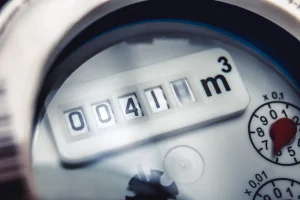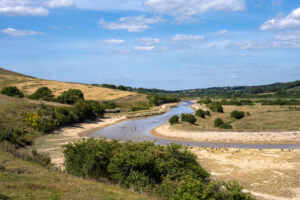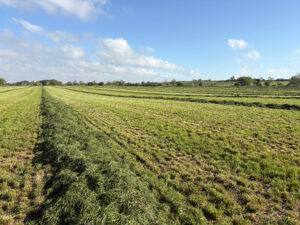The importance of preventing agricultural water pollution
Agricultural runoff continues to pose significant environmental risks, including contamination of water sources, loss of biodiversity, and threats to human health. Silage effluent, in particular, is highly polluting, over 200 times more potent than untreated sewage, due to its high biological oxygen demand (BOD), which can deplete oxygen in waterways and harm aquatic life.
Preventing such pollution is not only crucial for environmental protection but also for farmers’ compliance with regulations and avoidance of potential fines.
Understanding silage and its environmental impact
What is silage?
Silage is fermented, high-moisture stored fodder used to feed ruminants like cattle and sheep during periods when fresh forage is unavailable. It is typically made by cutting grass at its nutritional peak, wilting it to reduce moisture, then storing it in anaerobic conditions, either in silos, clamps, or wrapped bales, to ferment.
Risks associated with silage effluent
Silage effluent is a byproduct of the ensiling process, especially when using wet forage. If not properly contained, this effluent can leach into waterways, causing severe environmental damage. Its high BOD means it consumes oxygen in water bodies, leading to the death of aquatic organisms.
Current regulations and best practices (2025)
England
Under the Silage, Slurry and Agricultural Fuel Oil (SSAFO) regulations, farmers must:
- Store silage at least 10 meters away from inland or coastal waters.
- Ensure effluent tanks are at least 50 meters from any spring, well, or borehole.
- Notify the Environment Agency at least 14 days before constructing, enlarging, or reconstructing silage storage facilities.
Additionally, the Farming Rules for Water require that organic manures, including silage effluent, are stored and applied in ways that prevent pollution.
Wales
The Water Resources (Control of Agricultural Pollution) (Wales) Regulations 2021 mandate:
- Silage must not be made or stored within 10 meters of any water body.
- Baled silage must be sealed in impermeable membranes and not stored or opened within 10 meters of any water body.
- Field silage must not be made or stored within 50 meters of a protected water supply source.
A statutory review in 2025 emphasized the need for continued adherence to these regulations to protect water quality.
Scotland
General Binding Rules (GBRs) in Scotland stipulate that:
- Silage effluent collection systems using pumps or sumps must have an overflow alarm with a dedicated power supply.
- New silos constructed after January 2022 must display maximum loadings for the structure.
Financial support for compliance
Farmers can access financial assistance through the Farming Equipment and Technology Fund (FETF) 2025, which offers grants ranging from £1,000 to £25,000 for equipment and infrastructure improvements, including:
- Silage clamps with effluent collection systems.
- Impermeable flooring and drainage systems.
- Effluent storage tanks.
Applications are open until 10 July 2025.
Practical steps for farmers
To minimise the risk of silage effluent pollution:
- Monitor moisture content: Ensure forage is adequately wilted before ensiling to reduce effluent production.
- Maintain storage facilities: Regularly inspect silage clamps, bales, and effluent tanks for leaks or damage.
- Proper storage location: Store silage and effluent tanks at recommended distances from water sources.
- Effluent management: Collect and store effluent in compliant tanks, and apply it to land in accordance with nutrient management plans.
- Stay informed: Keep up to date with regulations and best practices through resources provided by DEFRA and the Environment Agency.
Castle Water’s commitment
At Castle Water, we are dedicated to supporting farmers in achieving water sustainability. Our specialist team can assist you in managing water services to reduce costs, improve yields, and enhance profitability. Download our free Water Efficiency Guide for practical steps you can take now, and regularly visit our blog for the latest insights on sustainability and environmental protection.



